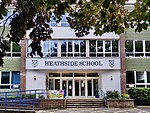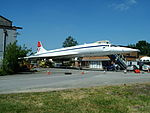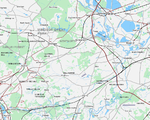Martin Hotine
1898 births1968 deathsBritish Army personnel of World War IBritish Army personnel of World War IICommanders of the Order of the British Empire ... and 5 more
Companions of the Order of St Michael and St GeorgeEnglish surveyorsEngvarB from September 2014People educated at Southend High School for BoysRoyal Engineers officers

Brigadier Martin Hotine CMG CBE (17 June 1898 – 12 November 1968) was the head of the Trigonometrical and Levelling Division of the Ordnance Survey responsible for the 26-year-long retriangulation of Great Britain (1936–1962) and was the first Director General of the Directorate of Overseas Surveys (1946–1955).He served on the North-West Frontier during the First World War and later in the Persian and Mesopotamian campaigns. He has been described as "decisive, ingenious and tough".
Excerpt from the Wikipedia article Martin Hotine (License: CC BY-SA 3.0, Authors, Images).Martin Hotine
Brooklands Lane, Elmbridge
Geographical coordinates (GPS) Address Nearby Places Show on map
Geographical coordinates (GPS)
| Latitude | Longitude |
|---|---|
| N 51.366442 ° | E -0.465578 ° |
Address
Brooklands Lane
KT13 8UX Elmbridge
England, United Kingdom
Open on Google Maps











